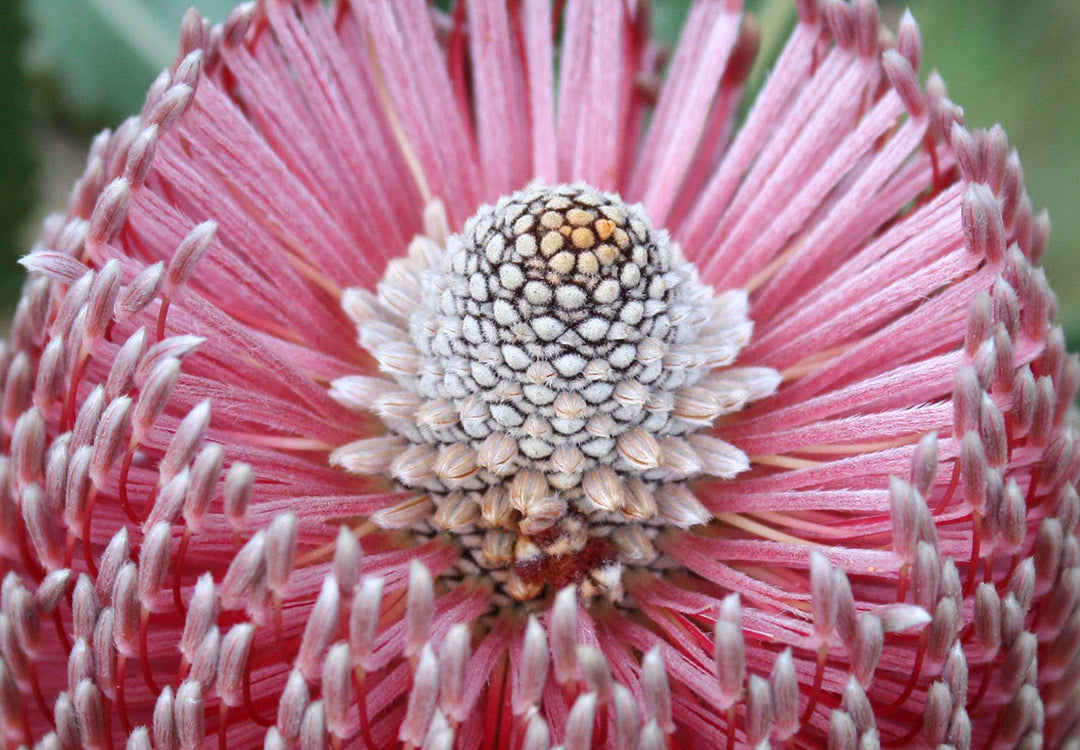
Banksia is a genus of shrubs, trees and shrubby trees within the Protaceae family, along with warratahs, grevilleas and proteas. Like many other members, these plants provide great food for pollinators such as lorikeets, rosellas, bats, possums and invertebrates.
Description
A fluffy or fuzzy inflorescence called a spike or candle exists at the terminal tip on the branch. As the bisexual flowers (in pairs of 2) are pollinated and age, they brown off and a number of dehiscent seed pods appear.

Banksia menziesii inflorescence close-up from the top. Image source

Open dehiscent seed pods on the infructescence of Banksia menziesii. Image source
Flowers, Fruits & Leaves
Tepals: Like other Protaceae members, banksias generally have flowers with 4 tepals (sometimes termed as having 4 petals and 0 tepals). Sometimes the tepals are called the perianth segment due to the fact they can be hard to distinguish.
Reproductive: 4 stamina are connected to the perianth, and there is a single pistil.
Fruit: An infructescence (composite fruit) with dehiscent seed pods remains as the floral candle matures after pollination. They can be called a follicle.
Seeds: Many seeds are tightly packed into the pod and are released when it ripens.
Leaves: Leaves may be entire (without lobes or teeth) or serrated. They can vary a lot in size, and may be arranged alternately in a spiral or whorl.
Noteworthy Types
Banksia serrata is a common species that is planted, and there are a number of cultivars available that all look quite different but tend to have yellow to orange inflorescences.

Banksia serrata with its candle inflorescence and serrated leaf margins. Image source
Banksia coconutcinea has quite a striking flower head that is used in floral arrangements.

A Banksia coccinea inflorescence, with just a few flowers open with stigmas presenting. Image source
Conclusion
Don’t hesitate to plant banksias in your garden. The wildlife will thank you, and you’ll benefit with attractive flower candles and an increase in bird life. And the best, most colourful birds are the types who love these perennial flowers.
If you haven’t already read my articles on plant identification and scientific names, I recommend reading those to get a broader picture of the topic. Alternatively, you can browse some of my other plant families, subfamilies and genera below.
